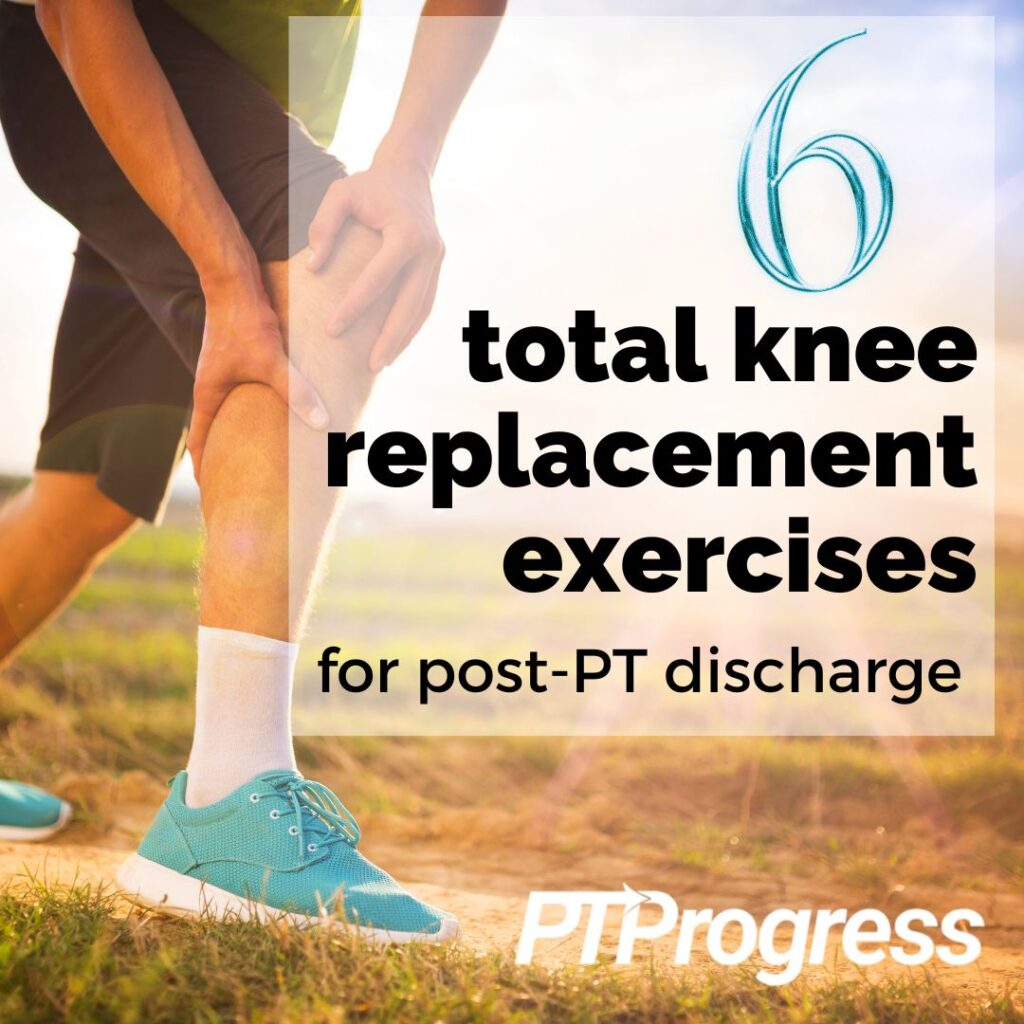
So you’ve just finished your six weeks of physical therapy after a total knee replacement surgery. Congratulations! But you’re not done exercising. For your knee to completely heal, you must continue doing your total knee replacement exercises at home. Exercise helps combat any remnants of swelling and inflammation that arose from your surgery. Fully recovering from surgery can take as long as a year, so it’s not quitting time just yet!
In this article, I’ll demonstrate 6 total knee replacement exercises to add to your home routine after being discharged from physical therapy. Maybe you tried one or more of these with your physical therapist towards the end of your program. Keep in mind, these exercises are more advanced, designed to take you to the next level after discharge. But everyone progresses at different rates. There’s nothing wrong with reverting back to an earlier version of your home exercise program if you experience pain or difficulty performing these exercises. Substitute or modify exercises as needed. What matters is that you move.
Your goal now on this side of recovery is to keep moving and keep challenging your body. Strengthening exercises will help you build muscle where your knee needs it most, and stretches will help improve flexibility and increase your overall mobility. Let’s look at just 6 total knee replacement exercises that will help you optimize your progress, post-PT!
6 Total Knee Exercises (Difficulty Level: Moderate)
Single-Leg Stance
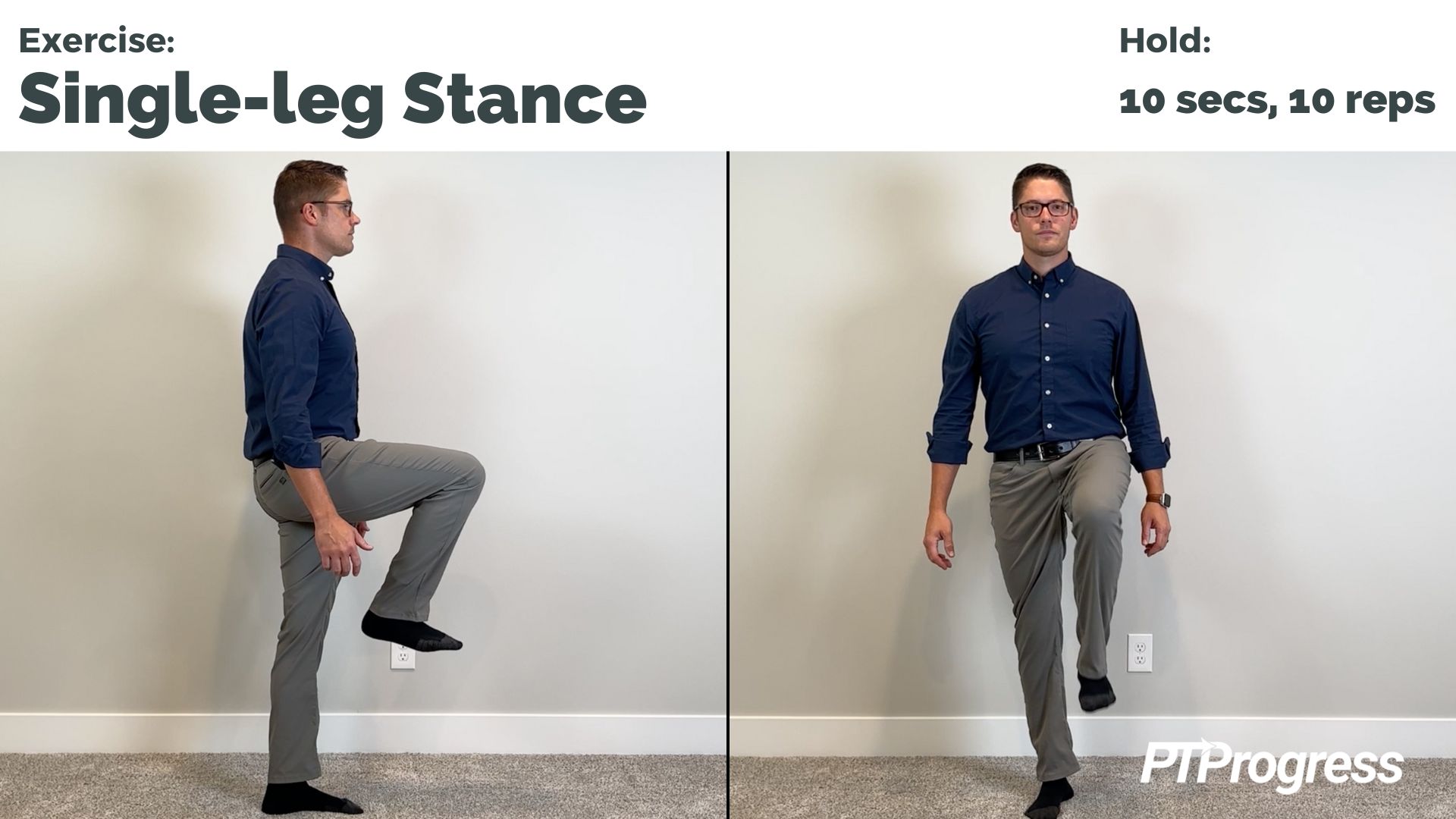
The goal of the single-leg stance is to improve your balance by strengthening the leg you’re standing on and shoring up your stability.
Begin by bracing your abdominals; you’ll want to keep your core engaged throughout the exercise. Then lift one leg, bending the knee to approximately 90 degrees from your hip. Hold this position for 10 seconds, then lower your leg, shift your weight, and repeat on the other side. Perform 10 repetitions on each side daily.
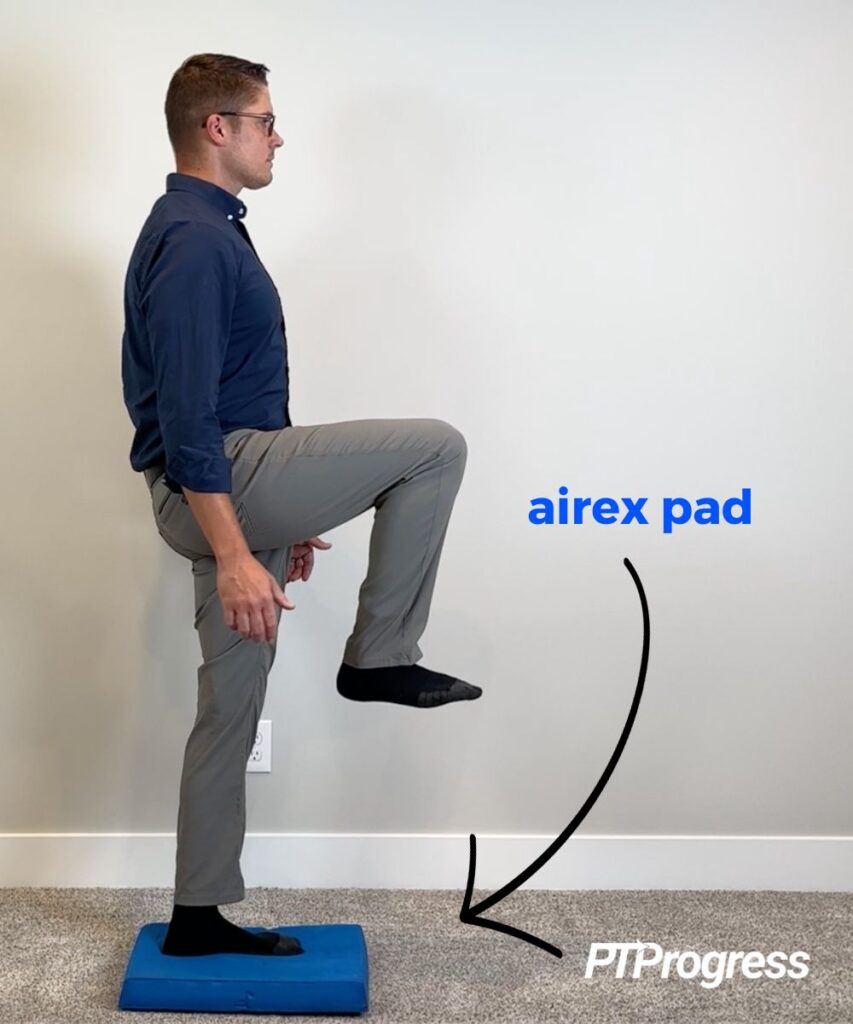
To advance this exercise, tap your foot towards a target on the floor in front of you, such as a cone or pillow, while maintaining the single-leg stance. This movement brings a slight unsteadiness that will challenge and ultimately improve your balance.
Standing on an uneven surface will also challenge your balance, forcing your muscles to make micro-adjustments to maintain stability. Start with carpet, then try another uneven surface such as the Airex balance pad for an even more advanced single-leg stance.
Step Downs
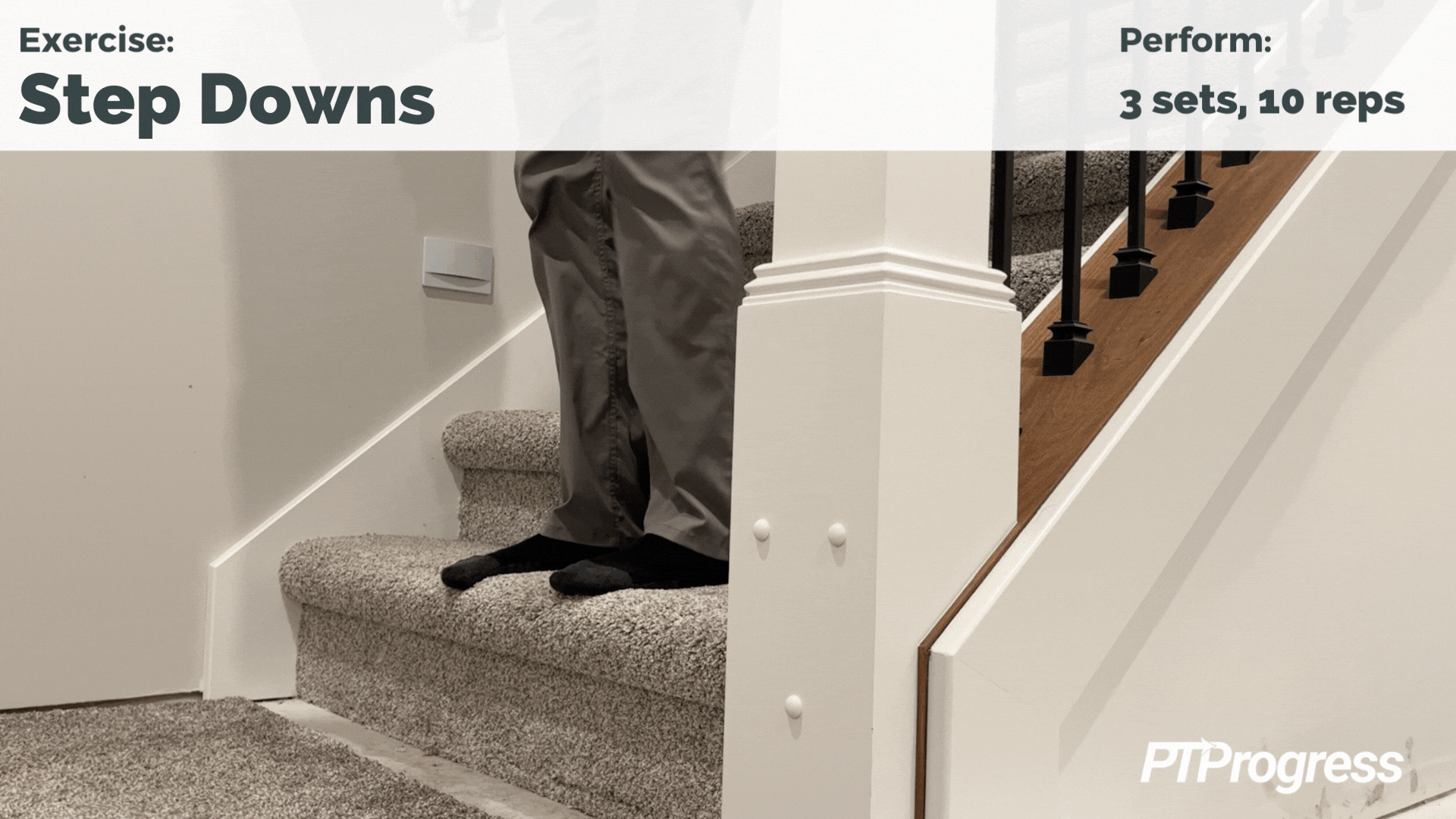
Similar to a single-leg stance, step-downs require isolating one leg for balance, this time while moving down and backward. Start at the base of your stairs and stand on the first step, with your back to the rest of the stairs. You can also perform this on a curb or solitary step. Stand on one leg and bend that knee so your other foot can reach the ground in front of you. You’ll simply tap the ground with that foot then return to the step while keeping your weight in your stance leg. Repeat 3 sets of 5–10 times on each foot.
If you feel unsteady while performing these step downs, it’s okay to hold onto the stair handrail for support. But your goal should be to perform this movement hands-free, using only your stance leg for stability.
Unassisted Squats
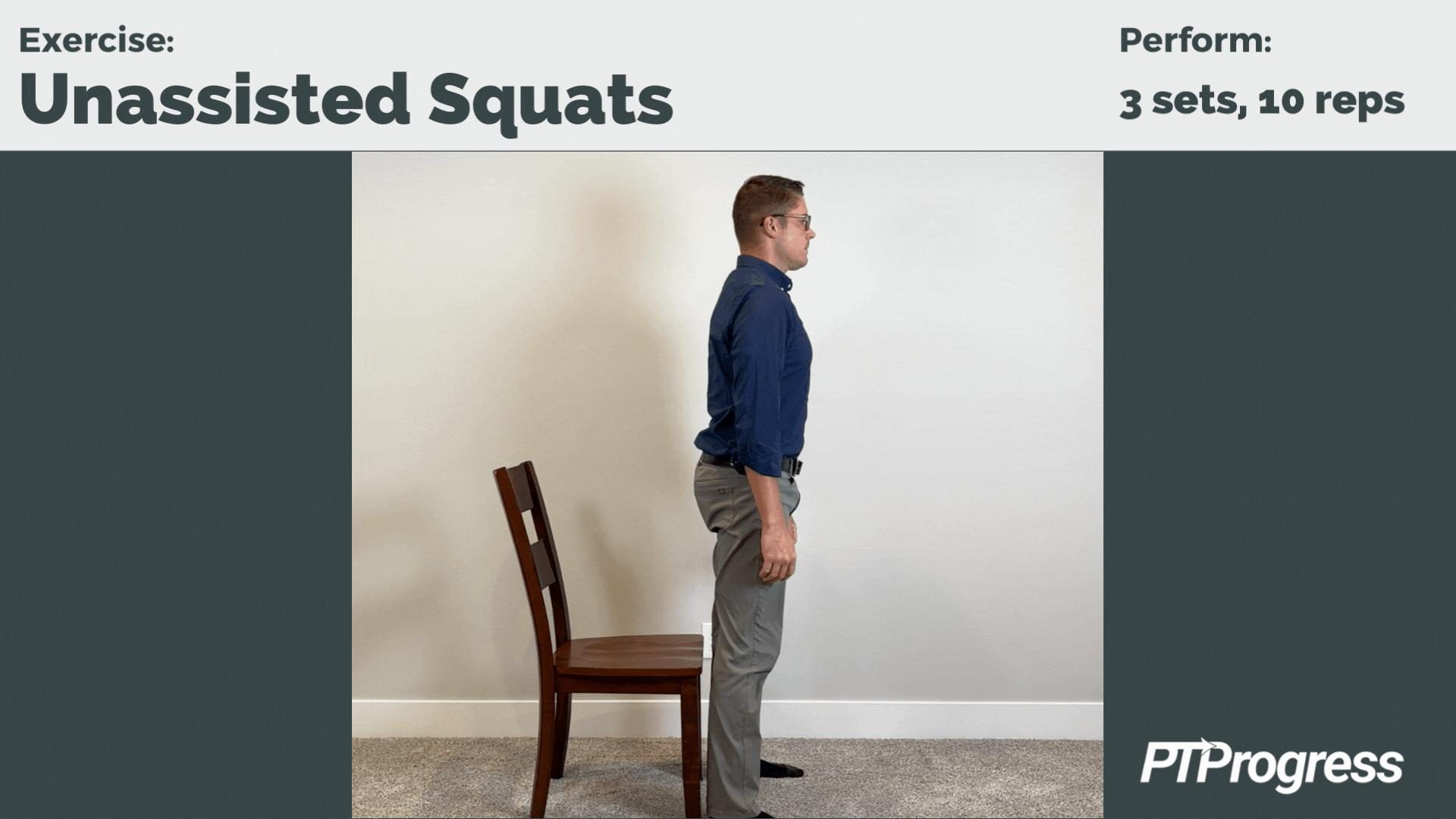
Not just for the gym, squatting is one of the most functional movements we make everyday. It’s important to keep practicing this movement as exercise, even after completing your initial total knee replacement rehab.
Find a stable chair for this exercise. Without holding onto anything, lower your bottom to the chair and return to standing without pushing off with your hands. Keeping your hands out of the way makes this move “unassisted” and puts all the work in your legs. Perform this squatting movement 10 times, repeating 2–3 times a day.
Once these unassisted squats start to become easy, you can increase the difficulty a couple ways. Try performing the squat with a therapy band looped around your knees, or hold a 10lb dumbbell in front of you as you sit and stand.
Mini Lunge
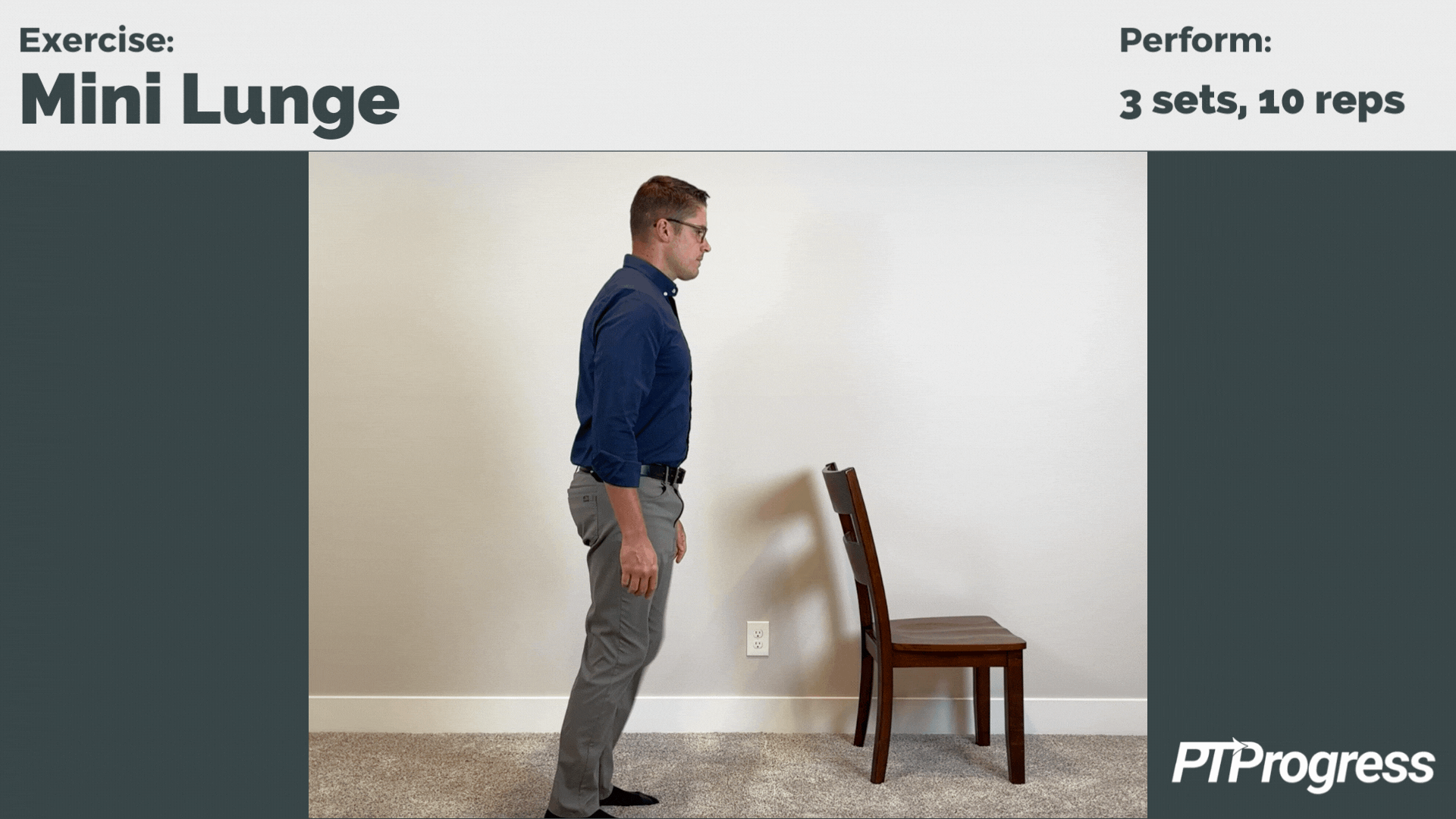
Lunges help strengthen the muscles around your knee that you use to take a step forward. Although your knee may not be ready yet for a full lunge, you can achieve a similar effect with a mini lunge.
Start standing, with your feet shoulder-width apart. Take one step forward, so your foot is slightly further forward than it’d be for walking. As you step, allow your front knee to bend slightly so your hips and torso lower by about 6 inches. Then use your front leg to press up and return to standing. Repeat on the other side to perform 2 rounds of 10 lunges, 5 on each leg.
To increase the challenge of this mini lunge, add some weight. You can grasp one weight in both hands against your chest, or hold smaller weights in each hand as they hang by your sides.
Lateral Stepping
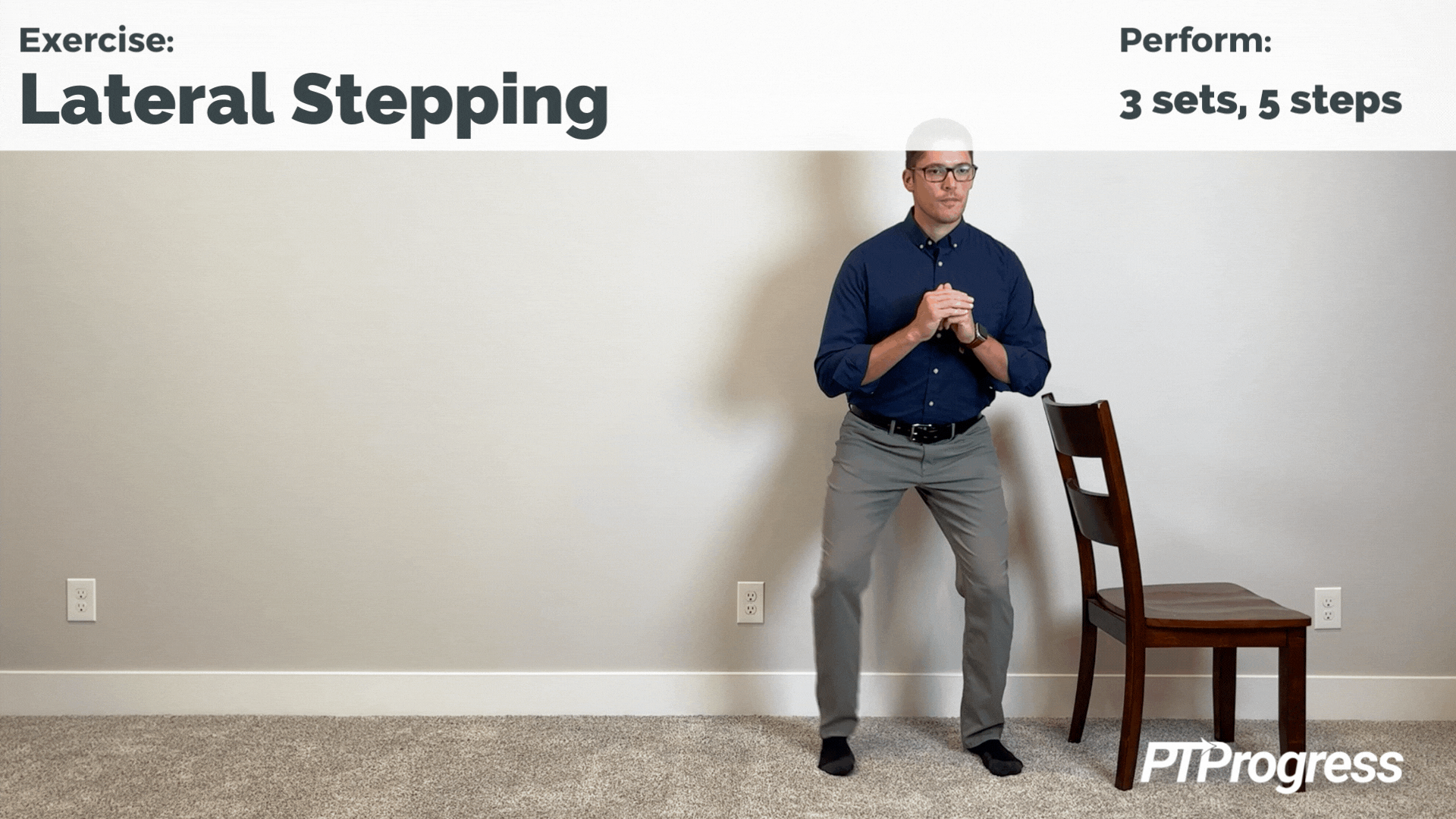

It’s easy to overlook the importance of lateral movement when rehabbing your knee. But lateral stepping, like in this exercise, can help strengthen the hip and thigh muscles while also improving your dynamic balance.
Stand facing a countertop, with your feet shoulder-width apart. Allow a slight bend in your knees. Next, take a step to one side and follow with the other foot, walking along the counter for 5 steps. If you don’t have a clear path to step along, you can also simply return to the start position after 1 step, repeating for 5 steps. Do it all over again, this time in the other direction, performing 3 rounds total of 5 steps each way.
For added resistance, loop a therapy band around your thighs just above your knees. You’ll feel the resistance each time you step, firing up the hip adductors and gluteus muscles.
Balance Board Training
One of the best tools for training your balance at home is a humble balance board, made of a flat surface atop a convex (or semi-round) base. The main goal is to stand on the board without losing your balance as it rocks and wiggles under even the smallest of movements.
Besides simply standing, you can perform so many movements on this tool. Start with simple motions such as rocking side to side and front to back. Integrate some forward and lateral reaches to get the upper body involved and challenge your balance even further. A balance board can intensify other exercises such as squats or even weighted squats. Considering how much use you can get out of it, from immediate knee rehab to more challenging workouts down the road, this physical therapy tool is well worth its $25–$35 price tag!
Exercising After a Total Knee Replacement: Final Thoughts
With time and patience, your new knee will soon be ready to support you through all your favorite activities, from hiking and biking to playing with pets or grandkids on the floor. These total knee replacement exercises will help improve the speed and quality of your recovery, ensuring you can restore strength, flexibility, and the range of motion you need to resume “normal life.”
Now that you’re out from PT and you’re on your own, it’s more than important than ever that you be safe and listen to your body. Any pain or discomfort is a sign you should back off the activity or modify the exercise.
And be consistent. It takes weeks of dedicated discipline to see real results.
Don’t be afraid to consult your PT if you have trouble progressing any of these total knee replacement exercises—or any of the ones you performed in your PT home exercise program. Your PT can help you identify any next steps to take to ensure a continued swift and smooth recovery.


